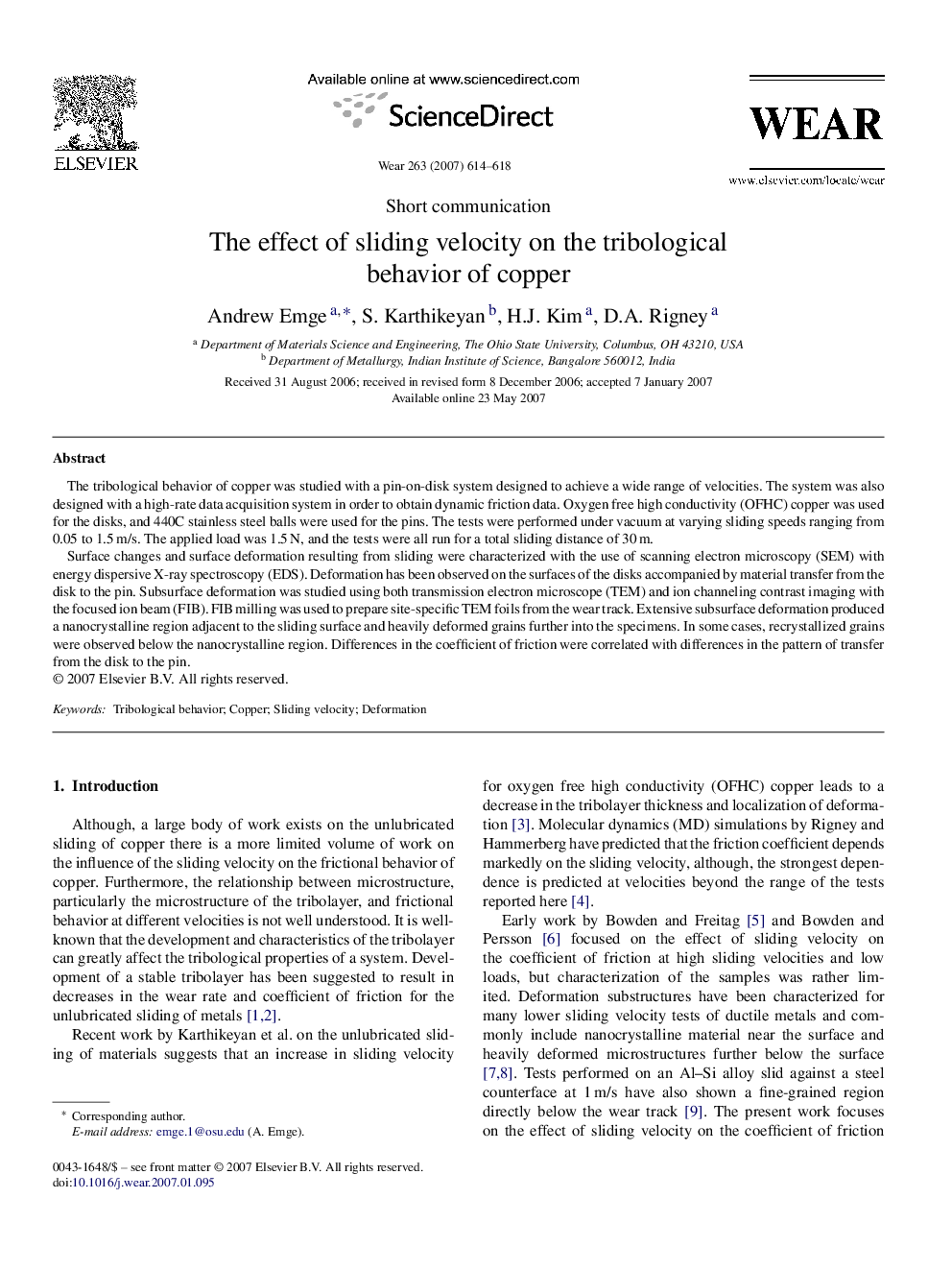| Article ID | Journal | Published Year | Pages | File Type |
|---|---|---|---|---|
| 619868 | Wear | 2007 | 5 Pages |
The tribological behavior of copper was studied with a pin-on-disk system designed to achieve a wide range of velocities. The system was also designed with a high-rate data acquisition system in order to obtain dynamic friction data. Oxygen free high conductivity (OFHC) copper was used for the disks, and 440C stainless steel balls were used for the pins. The tests were performed under vacuum at varying sliding speeds ranging from 0.05 to 1.5 m/s. The applied load was 1.5 N, and the tests were all run for a total sliding distance of 30 m.Surface changes and surface deformation resulting from sliding were characterized with the use of scanning electron microscopy (SEM) with energy dispersive X-ray spectroscopy (EDS). Deformation has been observed on the surfaces of the disks accompanied by material transfer from the disk to the pin. Subsurface deformation was studied using both transmission electron microscope (TEM) and ion channeling contrast imaging with the focused ion beam (FIB). FIB milling was used to prepare site-specific TEM foils from the wear track. Extensive subsurface deformation produced a nanocrystalline region adjacent to the sliding surface and heavily deformed grains further into the specimens. In some cases, recrystallized grains were observed below the nanocrystalline region. Differences in the coefficient of friction were correlated with differences in the pattern of transfer from the disk to the pin.
